Traveling to a foreign country is never easy. Add a motorbike and remote terrain into the equation, and there will be many questions that need answering. This article will try and tackle the basics about how to navigate Vietnam by motorbike.
Checkout our articles on the best motorbike rental shops in Ho Chi Minh, and the best motorbike rental shops in Hanoi.
For route help and advice, visit our overview article for Ho Chi Minh to Hanoi Motorbike Journeys.
Motorcycle Trip In Vietnam. Choosing the Best Backroads
Contents [show]
To save you from hours searching the internet, we’ve organized a wide selection of resources to help you make an informed decision about where to go on your motorbike trip through Vietnam.
Here are some of the top resources for choosing a route through Vietnam:
- Routes – General Summaries. This is a category where we talk about areas of Vietnam, there is route content within, but not day by day breakdowns.
- Routes – Day by day motorbike guides. This category is for article that have day by day guides within.
- Routes – Offroad routes. These are maps and article of offroad routes. Made public to “sell the dream” so you book a motorbike tour. In reality, they are not doable for normal rentals.
- Vietnam Backroads. The Backroads page is a popular Facebook group that is well informed about various road conditions and up to date weather around Vietnam. You can search the group to have most of your questions answered.
- Vietnam Coracle. The Vietnam Coracle covers a wide variety of things around Vietnam. There is also a popular “Motorbike Guides” section where they offer some more driving options.

How do Taxi’s work
Tigit motorbikes has locations in Ho Chi Minh, Dalat, Danang and Hanoi. The two big international airports are Ho Chi Minh and Hanoi. Download the app GRAB (which is the same as uber). Set it up when at home. You can attach Grab to a card, or just pay the taxi in cash. Grab is the safest way to book a taxi without getting ripped off, and prices are very reasonable.
As a very general guide line, a 5-10 minute journey costs 50,000 – 100,000, and a 30-40 minute journey costs 150,000vnd to 250,000vnd. Hanoi and Dalat airport are quite far from Tigit offices, but the journey will still be less than 400,000vnd (20 US dollars).
Travel Distances In Vietnam
When you plan your motorcycle tour through Vietnam, it is common for people to assume they can accomplish much more driving than is possible. If you are looking to calculate travel distances in Vietnam with google maps, you should double how much time you need. Google maps will not allow for the numerous twists and turns in the road.
Top points to consider when navigating Vietnam
- For most, everything on GoogleMaps in terms of timing needs to be doubled or tripled
- For most, a typical day is 150-200km on models 150cc and below
- On models above 150cc, 200-250km becomes normal, and 300km is achievable
- There are hotels everywhere, so failing to reach the destination is not a problem
- A full day of driving includes coffee breaks, pictures, and generally, is relaxing, not stressful
Calendar Days to Travel Between Vietnam Destinations
- HCM to Danang takes around 7-10 days
- Hanoi to Danang takes approximately 7-10 days
- “The North motorbike routes” above Hanoi takes about 1 week – 3 weeks
- HCM to Hanoi takes about 20-25 days
When we organize our fully guided motorbike tours around Vietnam, we allow enough time to enjoy the ride. Looking through that page will give you an idea of how much time we feel comfortable taking on group rides.

Police In Vietnam
Audio PlayerPolice corruption in Vietnam still occurs. The best way to deal with the situation is to obey the law. In some incidences like the infamous Mui Ne Police Trap, police are lined up waiting for you to break the preposterously low 40km/h highway speed limit outside Mui Ne. You can’t entirely blame them, as years of dealing with law-breaking tourists who would continually hand over easy money lead to more and more corruption.
In the event, you need to pay a bribe, be sure to have a small amount of Dong in a separate pocket or wallet. The payment today ranges from 200,000vnd (10usd) to 3,000,000vnd ($150usd). The police don’t blindly target foreigners, and they will fine you for breaking the law.
Overall the police are nothing to worry about, just part of your adventure holiday!
Is it safe to drive a motorbike in Vietnam?
Audio Player- Read Tigit Jons article on tips on driving a motorbike in Vietnam.
- In Vietnam, the locals drive incredibly slowly. Moving around the city at more than 60km/h is unlikely. Crashes are frequent, but the speeds are low enough to rarely be life-threatening.
- Vietnamese drive badly, but slowly. Foreigners drive with skill, but far too fast for this country.
- Vietnamese are not expecting vehicles to move quickly, which is part of the reason for the casual and unskilled style of riding.
- Dogs are the biggest causes of client crashes as TigitMotorbikes
- If you should not have motorcycle experience, then rent a semi-automatic scooter.
Buying a sim card in Vietnam
ESim
Welcome to the modern age. Now, it is possible to buy an Esim before coming to Vietnam. This is how I travel these days, be it Romania, India, or just going home back to the UK. The Esim can be bought in advance, and as soon as your plane touches down, the sim connects to the internet, and your contract is started. The interface is in English and easy to use, so I don’t have to worry about not understanding how much data I have left. You can also easily top up if you want to.
A 5 GB package is enough for users who know how to manage their data. For users who don’t want to worry about running out, get the 10GB package!
Use the code JON1131 to get $3 off your sim!
Just make sure your phone supports the ESim!
Local Sim
Audio PlayerThe cost of internet coverage in Vietnam is unbelievably cheap. You can pick up a data sim card for around 70,000vnd, or about $3usd. Once you have the card, unlimited 3g internet only costs about 80,000vnd, or $4usd, for a month! Having internet access to use things like google maps will be incredibly helpful for your drive through Vietnam. Picking up a tourist sim card is a simple process that you usually take care of in under an hour.
Travel tips for what to do:
- Bring an unlocked mobile phone.
- Find the closest The Gioi Di Dong mobile phone shop.
- Buy a sim card for around 70,000vnd.
- Purchase a $10usd top-up card & have the attendant activate the 80,000vnd unlimited internet plan.
The Gioi Di Dong shops are easy to spot; they are yellow and usually have loud music blasting out of them. Once you’re inside the shop, most of the employees can speak basic English to help you out. Also, if you are in Ho Chi Minh City, the store around the backpacker street of Bui Vien Street is very familiar with setting sim cards for foreigners.
Coverage around Vietnam is typically good, except for some of the more remote regions of the country. You can get a 3g phone set up on your choice of Mobi or Viettel networks. Viettel is said to have slightly better coverage, but both are good enough that you should take whatever option is available. There is also the complete guide to buying a sim card in Vietnam if you need a more in-depth explanation.

Motorcycle Cell Phone Holder and USB Chargers
All Tigit motorbikes are equipped with high-quality phone mounts. For more information on accessory gear, please visit Chrunix the Tigit motorbike shop.
Also visit the FAQ section on the website for a further explanation on USB charges.

Tigit does not use USB chargers. Attaching a USB charger to a motorbike will instantly void any warranty as mechanics automatically blame 3rd party ad on’s for any electrical problems. The solution to this is to use an external power-pack. You can bring them from home or pick them up for around $15usd from The Gioi Di Dong shops that sell sim cards and phone packages.
Overview of phone holders and USB chargers:
- Bring your cell phone. You’ll want it for navigating the routes around Vietnam.
- Tigit has phone mounts installed on all motorbikes.
- Buy or bring a USB power-pack to charge your cell phone.

Vietnam & The Weather; Best time to visit
The weather in Vietnam can be challenging to predict. Many travelers often make the mistake of assuming that everywhere in Vietnam is hot. The beaches and the South of the country can typically offer pleasant weather year-round. However, Vietnam has a mountain range and a tropical and sub-tropical region that can mean the region’s temperature may vary drastically.
If you plan your entire motorcycle vacation around the weather, then March and April are the best times to drive through Vietnam. March and April will see the most stable conditions across the country.
Southern Vietnam Weather Monthly
- Ho Chi Minh: In and around Ho Chi Minh, you can expect the weather to always be hot. If you are only thinking of traveling around this area or enjoying some day trips from Ho Chi Minh, you can plan to come any time of year with light clothing.
- Da Nang and the South: From the middle of Vietnam, around Hue. To the very South past Ho Chi Minh. The typical rainy season is from July to October.
- Cyclone / Typhoon season: In the middle sections of Vietnam from September to December, there is a possibility of encountering a cyclone. The Cyclones are irregular and not frequent, but they do occur.
North Vietnam Weather Monthly
- Hue and the North: August to September is the best time to travel the North part of Vietnam. During these months, the weather is typically stable, and you can view the yellow paddy fields while they’re in bloom.
- March to May: The weather is generally calm and an enjoyable time to ride.
- June to August: These months make up the rainy season, and you’ll need to pack your rain gear.
- December to February: This time of year is cold, so cold that you can expect to see snow in some regions.
Planning For The Seasons
View our what to bring and wear article to help cope with different climates. There is no point trying to avoid a particular part of the country for one season or another. Just plan accordingly and enjoy your adventure. If you decide you want to go to the central areas during the cyclone season, it’s okay. Just know that if a storm hits, it will typically not last more than two days. You can wait it out and continue onwards after. If you want to go into the North during the cold season, don’t worry.
Vietnam weather and climate tips
- During heavy rains, the rivers and waterfalls fill to look even more spectacular.
- Typically if it’s hot in the South, it will be cold in the North.
- When big storms hit, you might feel unlucky. However, the experience of seeing the dramatic weather will leave you with great stories to tell!
- Like the weather anywhere in the world, you can’t get it right all the time. For help, use the Accuweather forecast tool.
Many travelers spend too much of their time hoping to predict the weather and plan around it. In reality, the weather will not stop your trip entirely, and it’s best to spend your time deciding what you want to see. If you feel like your vacation will be more enjoyable if the weather is at its best. You will want to make a South motorbike loop, where the climate is most stable.
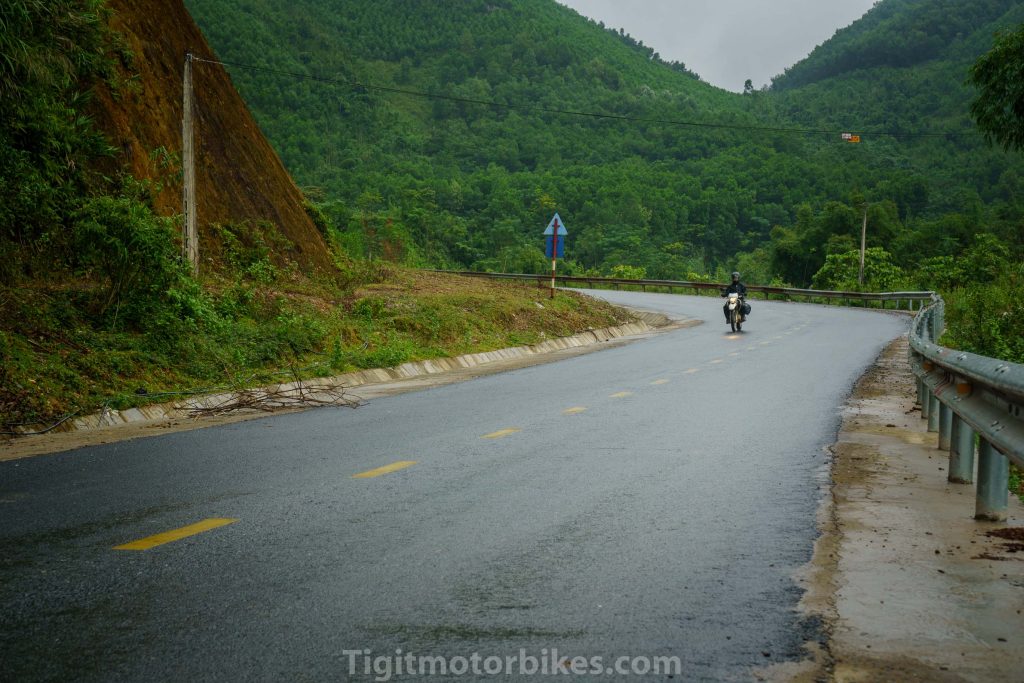
There are no seasons, or conditions that will stop a true adventure seeker from enjoying a motorbike holiday in Vietnam. Every condition and season has its pros and cons.
What map to choose when driving Vietnam
To navigate the country for the modern traveler, Google Maps will be the number one asset. If you plan to take the scenic route and go into the country’s more remote regions. Then you will need to follow our article about using offline maps.
Navigation tools:
- Google Maps to be used along with your sim card and unlimited data plan
- Maps.me downloaded before venturing out onto the backroads
- Ask the locals for directions.
- Visit Vietnam Coracle who have a full article on this topic

Vietnam road terminology explained
Like all countries, Vietnam has road names, and once you understand them, you’ll have an easier time knowing what roads to look for and what ways you may choose to avoid. Some of the roads will be well-maintained and heavily traveled routes, while others are small single-track roads that you might be better off avoiding.
AH1 – This is the main highway connecting the South and North regions. Mostly this is a busy road and should be avoided for leisure travel. However, to save time on entering and exiting cities, the AH1 can be useful and generally is the quickest method to get from A to B.
QL National Road – QL Roads Vietnam are usually in good condition and always paved. The majority of the time, motorbike travelers will be sticking to the QL roads to navigate the country on motorbike road trips easily.
QL **b – Usually an alternative to the primary QL road, if seeing a B sign, it is usually a better choice as the way tends to be more remote.
CT Super Highway – These are for cars only, and no motorbikes are allowed. The exception to the rule appears to be the CT08 in Hanoi. Here they allow motorcycles.
DT Countryside Road – These are usually in reasonable condition. However, some DT roads are incredibly demanding.
TL, Very Small Road – Normally, these roads are single track for villages and shortcuts. Most of the time, travelers won’t be driving these.
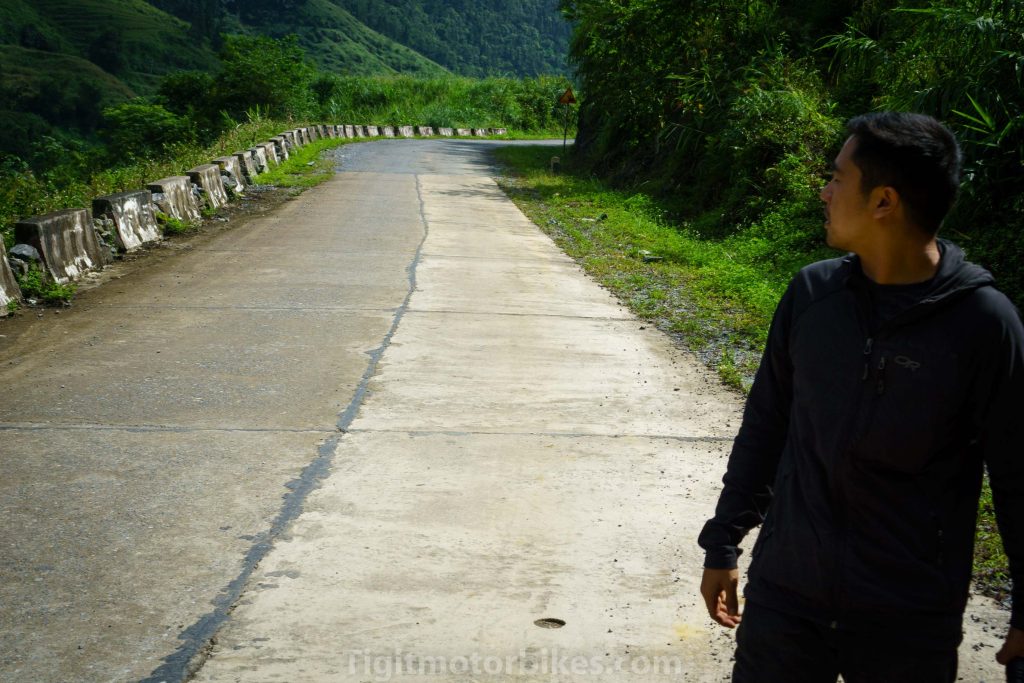
Vietnam hotels. The best websites for booking.
- Agoda.com. It’s an excellent resource for searching out hotels in Vietnam. They have the typical search features along with “Secret Deals” option with significant discounts.
- Booking.com. Owned by the same company as Agoda. Booking has a wealth of room resources & books over 1.5-million rooms a day. Here you can see transparent reviews, search by location or amenity, and see overall ratings.
- Hostelworld.com. An excellent resource for hostels, but they take it one step further. Hostelworld offers resources about budget travel, things to do in various cities, and overall travel experience.
- AirBnB.com. A user-friendly platform that allows people to rent out their homes or apartments. A great option if you’re looking for something private that will enable you to be independent. Right now, this option is very under-priced in Vietnam for what it offers.
- Google hotel search has become increasingly more powerful.
If you are looking for something authentic, you might want to try a Homestay in Vietnam. In a Homestay, you’ll get to spend time with a local family, typically right in their house. The cultural exchange is an excellent way to get to know the people of Vietnam. Just search the location you are interested in, plus the word Homestay into Google. For example; “Da Lat Vietnam Homestay,” and Google will give you some options.
Google also offers a hotel finder option. You can input the location plus hotel into Google, and it will provide a list of options. For example, “Phan Thiet Hotel.” Then Google populates a list of options that can be sorted by price or overall match and then takes you to find the best deal. This feature is a beneficial way to get the best overall results for Vietnam hotel accommodation.
Remote hotels. How to find them in Vietnam.
To find a night’s accommodation in remote areas, you can do a few things. To the locals, a guest house is known as a “Nha Nghi.” Once you start to look around, you’ll notice these signs are everywhere throughout Vietnam.
To find a Nha Nghi on Google Maps, manually search for anything close to you that looks like the main road or a crossroad. The crossroad normally belongs to a town, and now search “Nha Nghi + the town name.” For example; “Nha Nghi Bac Ninh.” If you still can’t find anything, just search around on your map for any building clusters. Once you make your way to this area on your motorbike, you are very likely to notice signs posted with Nha Nghi’s to accommodate you.
Nha Nghi’s hotels
- Nha Nghi is a motel in Vietnam.
- Find the main road in Google Maps and follow it until you find a town.
- Search Nha Nghi plus the town’s name in Google Maps. For example, “Nha Nghi Bac Ninh.” The town might be big enough for Google listings
- Search manually in Google Maps to find clusters of buildings in these small towns. Drive there and search for buildings with Nha Nghi posted outside
Even if you think that you are so far off the beaten path that you’ll be sleeping under the stars for the night, the chances are that you’re never far from a hotel. Vietnam is a great country to explore, and once you feel comfortable with how to find your way through it, you can travel with ease.
Vietnam hotels explained.
Party Hostels – Dorm rooms usually at around $7usd a night with “free breakfast.” Party hostels operate for the masses of backpackers, and the money is made from selling beer and tours. These rooms are found in any backpacker area, and you can book them through Hostelworld.com
Budget Hotels – Hotels usually start at 250,000vnd per night, or $12usd. If you are traveling as a couple or as a group who don’t mind sharing a room, then these work out cheaper than dorm rooms. Vietnamese-operated hotels often have 3 or 4 bedroom rooms, and the benchmark price of 250,000-300,000vnd gets split among the group. These hotels tend to have rock-hard mattresses but provide the basics of what you can expect from a $12usd room.
Good Hotels – To get a good hotel in Vietnam, you can expect to pay 500,000vnd or $25usd.
500,000vnd will get you a nice hotel room, good mattress. Good hotels booked through Agoda.com or Booking.com
Excellent Hotels / Resorts – Resorts start around $70 and go onward and upward. For a truly comfortable stay, around $120-150 is the price to be looking at.
Nha Nghi – Most of the time, you’ll probably want to avoid spending a night in these less than desirable accommodations. If you find yourself in a rural town without many options, then a Nha Nghi is probably your best or only choice. Rooms can range around 150,000vnd and aren’t usually much more than a place to rest your head for the night.
Homestay – A night in a Homestay will probably be one of the best options for traveling the North of Vietnam and above Hanoi. Initially, motorbike tour companies needed accommodation for their tours, so they arranged a night’s stay with families who would provide food and a place to sleep. Here you could get to meet the families, and they would hope you would drink a lot of their Rice Wine. Homestays are starting to emerge slowly around the country, and overall, it’s a great way to experience the culture.
Homestays are best booked in advance so they can prepare for your arrival. A night at a Homestay is usually around 150,000vnd for a night, plus your food cost.
Remote regions: Hotel VS Khach San VS Nha Nghi
In order of good to bad
Hotel – Usually around $15, a Hotel may grasp how to deal with foreigners. They have decided to call themselves “Hotel” in English, instead of “Khach San” in Vietnamese.
Khach San – This is a direct translation of “Hotel” and is usually priced around $12. Overall there is no difference between “Hotel” and “Khach San”, but you may have a better chance of a good stay in a Hotel.
Nha Nghi – Very cheap place to stay. The western equivalent of a motel.
Safe food Vietnam. What to eat to play it safe.
Finding food on your Vietnam motorbike travel will usually be pretty straightforward.
When you are in the main tourist areas, both Vietnamese and western food selection, is plentiful. You can easily find pizza, hamburgers, and fries right next to noodle shops. You’ll probably even have the option to read the menu in English!
All of this is great until your motorcycle adventure takes you out into the countryside. Here the western food options and menus written in two languages quickly disappear. You’ll then need to rely on the local cuisine to get you through the day. Not to worry, Vietnam has a selection of straightforward food that is reasonably unadventurous, and of course, they have some things that might be better to avoid.
Vietnamese food that’s straightforward
Breakfast:
Baguette Sandwich = Banh Mi. A banh mi is a typical Vietnamese sandwich, usually consisting of meat, some pickled vegetables, and chili peppers. These sandwiches make for quick morning breakfasts and can be wrapped up and stored for lunch later. Easily found in cities and towns, you’re not as likely to come across a banh mi in the more remote areas.
Lunch:
Beef Noodles = Pho Bo or Bun Bo. Your basic rice noodle soup with beef, herbs, vegetables, and broth. The taste is mild, and it’s easy to find this dish virtually anywhere. Just wake up, get your bike loaded, and drive until you see a sign for “Pho Bo”! Pho is also available with Chicken (Gà) when you’re looking to mix it up once in a while.
Dinner:
Rice With Beef = Com Thit Bo. This dish is a bit like a stir-fry with beef, rice, and vegetables. If you have time for a leisurely lunch break, you could order up the Com Thit Bo then too.
Rice With Chicken = Cơm gà. The same as above, only with Chicken instead of beef. If you’re feeling like a western and Vietnamese fusion dish, you can ask if they have it with french fries. Just ask, or look for Khoai tay chien.
Cubed Beef With French Fries = Bò lúc lắc. You’re only likely to find this dish on a sit-down restaurant menu. When you do, you’ll know that you have safely not gotten outside your comfort zone and that ketchup is your comfort food!
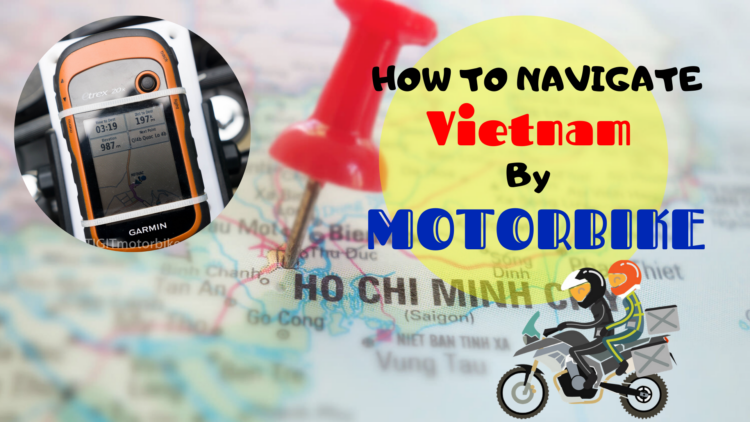



















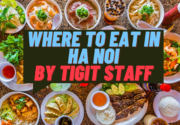



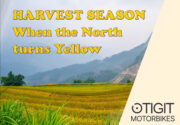


Thanks for the great information. Can I follow the Google My Map route you created by linking it with the Google navigation app?
I want to follow the your “my map” route plan that you have already made using Google Navigation
or maps.me.